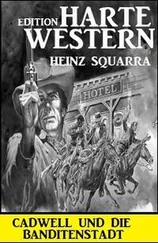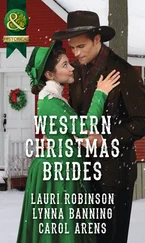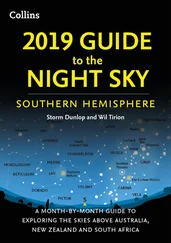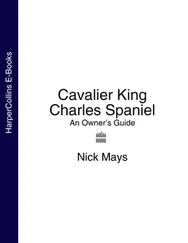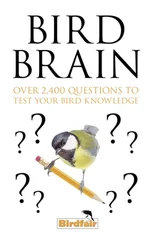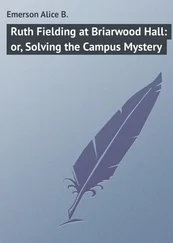Charles Reed - Western Bird Guide
Здесь есть возможность читать онлайн «Charles Reed - Western Bird Guide» — ознакомительный отрывок электронной книги совершенно бесплатно, а после прочтения отрывка купить полную версию. В некоторых случаях можно слушать аудио, скачать через торрент в формате fb2 и присутствует краткое содержание. Жанр: foreign_antique, foreign_prose, на английском языке. Описание произведения, (предисловие) а так же отзывы посетителей доступны на портале библиотеки ЛибКат.
- Название:Western Bird Guide
- Автор:
- Жанр:
- Год:неизвестен
- ISBN:нет данных
- Рейтинг книги:3 / 5. Голосов: 1
-
Избранное:Добавить в избранное
- Отзывы:
-
Ваша оценка:
- 60
- 1
- 2
- 3
- 4
- 5
Western Bird Guide: краткое содержание, описание и аннотация
Предлагаем к чтению аннотацию, описание, краткое содержание или предисловие (зависит от того, что написал сам автор книги «Western Bird Guide»). Если вы не нашли необходимую информацию о книге — напишите в комментариях, мы постараемся отыскать её.
Western Bird Guide — читать онлайн ознакомительный отрывок
Ниже представлен текст книги, разбитый по страницам. Система сохранения места последней прочитанной страницы, позволяет с удобством читать онлайн бесплатно книгу «Western Bird Guide», без необходимости каждый раз заново искать на чём Вы остановились. Поставьте закладку, и сможете в любой момент перейти на страницу, на которой закончили чтение.
Интервал:
Закладка:
Range.– Pacific coast, breeding along the whole coast of the United States.
BAIRD CORMORANTS
This smaller Cormorant breeds on the Pacific coast from Washington south to Mexico. It is not nearly as common as the former species and not inclined to breed in colonies with the others, but is more secluded.
Nest.– Their nest building is very similar, using the rocks and cliffs on which to place their nests mostly, and very seldom building in trees. Their eggs are much smaller, averaging 2.20 × 1.40.
RED-FACED CORMORANT
The plumage of this species differs from the above chiefly in having the forehead bare. Their breeding habits are the same as other members of the family. That the Cormorants are expert fishermen may be seen from the fact that the Chinese tame them to catch fish for them, placing a ring about their necks to prevent their swallowing the fish.
Nest.– The nesting places of these as well as other members of this family are very filthy, being covered with excrement and the remains of fish that are strewn about their nests (2.50 × 1.50).
PELICANS. – Family Pelecanidæ
WHITE PELICAN
Plumage mostly white, with black primaries; eyes white; bill and feet yellow, the former in the breeding season having a thin upright knob about midway on the top of the upper mandible. They get their food by approaching a school of small fish and suddenly dipping their head beneath the surface, sometimes scooping a large number of fish at a time; they contract the pouch, allowing the water to run out of the sides of the mouth, and then swallow the fish.
Nest.– On the ground made of sticks and weeds, generally only a lining about the outer edge; the eggs being placed upon the ground. Two or three eggs are laid, pure chalky white (3.45 × 2.30).
CALIFORNIA BROWN PELICAN
Upper parts gray; lower brownish streaked with white; back of neck rich velvety brown; head and throat white.
Nest.– On the ground or in small trees, composed of sticks and weeds. Three or four chalky white eggs (3.10 × 1.95).
MAN-O’-WAR BIRDS – Family Fregatidæ
FRIGATE BIRD
In comparison with their weight, these birds have the largest expanse of wing of any known bird. Weighing only about four pounds they have an extent of from seven to eight feet. The length of the bird is about 40 inches, of which the tail comprises about 18, more than half of this being forked. They can walk only with difficulty and are very poor swimmers, owing to their small feet and long tail, but they are complete masters of the air and delight to soar at great heights. Their food of small fish is secured by plunging, or preying upon other sea birds.
Nest.– A frail platform of sticks in the tops of bushes or low trees. A single white egg (2.80 × 1.90).
AMERICAN MERGANSER. ORDER ANSERES
These birds have the bill long, not flattened, but edged with sharp teeth to grasp the fish, upon which they live to a great extent.
Nest.– In holes of trees, cavities among the rocks, or on the ground; 6 to 9 creamy buff eggs are laid (2.70 × 1.75).
RED-BREASTED MERGANSER
This species is more abundant than the preceding, and is found commonly on our large ponds, lakes and rivers, more than on the coast. The male has the head, neck, and crest iridescent greenish black, breast brownish with black spots. The female has the head, neck and crown a deep chestnut color and the upper parts and tail a gray in place of the black found on the males.
Nest.– They lay from seven to ten eggs of a creamy buff color, making their nest of moss and grasses, placed under or in tufts of grass or in crevices of rocks; usually lining the nest with feathers (2.50 × 1.70).
Range.– Whole of North America, breeding from central United States to British America.
HOODED MERGANSER
Bill short, compared with the preceding. The large crest with which both sexes are adorned will easily distinguish this from the others. The male having the crest black with a large white patch, and that of the female plain brown.
Nest.– In holes of trees; 8 to 12 eggs, grayish white (2.15 × 1.70).
GADWALL
Male with chestnut wing coverts and white speculum; the female is similar but the back and wings are brownish-gray. As is usual with many of the ducks these do most of their feeding early in the morning or after dusk, and spend the greater part of the day in sleeping. They are one of the most noisy and active of the ducks.
Nest.– They nest on the ground among the reeds of marshes or in the long grass of bordering fields. They lay from 7 to 12 eggs of a creamy buff color (2.10 × 1.60).
Range.– Includes the whole of North America, breeds from British Columbia to southern California.
MALLARD
These are regarded as one of the best table birds. They feed on mollusks and marine insects which they generally reach by tipping in shallow water.
Nest.– In close proximity to ponds or lakes, placing their nests in the tall grasses of which it is made and lined with feathers. Breed from Alaska to southern California (2.25 × 1.25).
BALDPATE – AMERICAN WIDGEON
These are common and well-known birds throughout North America, where they are called by a great variety of names, most of which refer to the bald appearance of the top of the head, owing to the white feathers. They can usually be identified at a distance by the absence of any dark markings, and when in flight by the whiteness of the under parts.
Nest.– Made of grass and weeds neatly lined with feathers, on the ground or in marshes. 6 to 12 cream colored eggs are laid (2.15 × 1.20).
GREEN-WINGED TEAL
These are the smallest of the Duck family, and are eagerly sought for by sportsmen, both for their beauty and the excellence of their flesh. The male may be easily identified by the reddish brown head and neck, with the large green patch behind each ear.
Nest.– On the ground under the shelter of tall grasses, it is made of weeds and grass and lined with feathers. 5 to 9 buffy eggs are laid (1.85 × 1.25). Breeds abundantly in California and Oregon.
BLUE-WINGED TEAL
Male has the head a dark gray with white crescent in front of the eye; under parts chestnut heavily spotted with black; wing coverts bright blue. Female similar to female Green-wing GREEN-WINGED TEAL 139. Nettion carolinense. 14 inches These are the smallest of the Duck family, and are eagerly sought for by sportsmen, both for their beauty and the excellence of their flesh. The male may be easily identified by the reddish brown head and neck, with the large green patch behind each ear. Nest. – On the ground under the shelter of tall grasses, it is made of weeds and grass and lined with feathers. 5 to 9 buffy eggs are laid (1.85 × 1.25). Breeds abundantly in California and Oregon.
, but has the blue wing coverts. In flight can be easily separated from the Green-wing by its darker under parts. Their flight is very rapid, and usually in compact lines. This is more common east of the Rockies than the other.
Интервал:
Закладка:
Похожие книги на «Western Bird Guide»
Представляем Вашему вниманию похожие книги на «Western Bird Guide» списком для выбора. Мы отобрали схожую по названию и смыслу литературу в надежде предоставить читателям больше вариантов отыскать новые, интересные, ещё непрочитанные произведения.
Обсуждение, отзывы о книге «Western Bird Guide» и просто собственные мнения читателей. Оставьте ваши комментарии, напишите, что Вы думаете о произведении, его смысле или главных героях. Укажите что конкретно понравилось, а что нет, и почему Вы так считаете.



